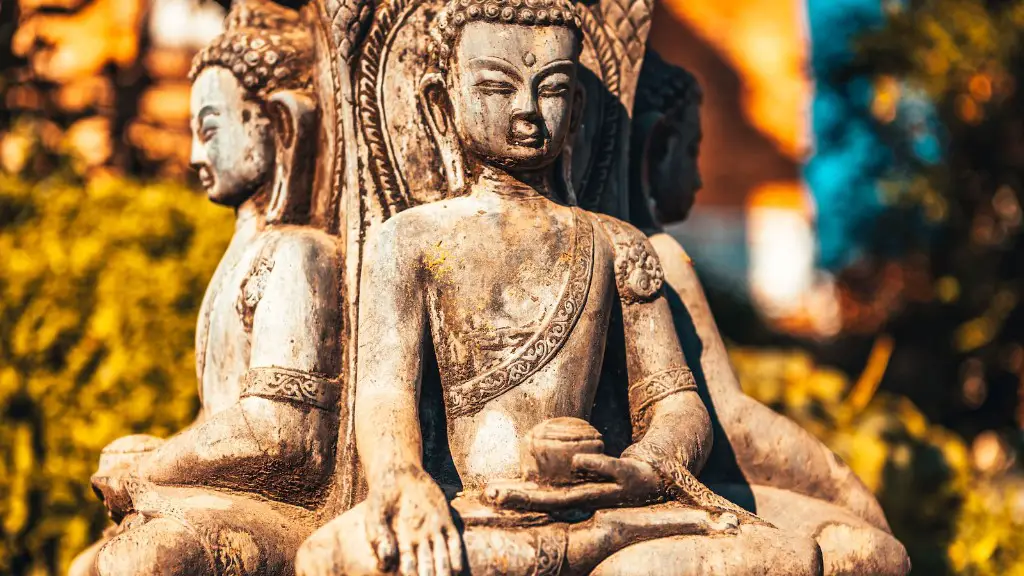Ramayana In Hinduism has been an integral part of Hindu culture since the time of ancient India, and the stories and personalities it features have made a lasting imprint on Indian religious life. The Ramayana, which is one of two great epics of Hinduism, tells the story of Rama, son of King Dasaratha, and his wife Sita who is kidnapped by Ravana, the demon-king of Lanka. The epic chronicles Rama’s quest to rescue Sita and defeat Ravana, a task which he ultimately achieves, but not without great tragedy. This grand adventure is interlaced with philosophical themes and life lessons that form the basis of one of the oldest and most endearing religious tales.
Today, the Ramayana continues to be a powerful source of inspiration for Hindus all over the world, and its lessons are reinterpreted and adapted for each generation, making it a source of timeless wisdom and morality. The character of Rama exemplifies the ideal man and is admired for his strength, self-control, and devotion. Hindus venerate him as a supreme figure, and many worship him as an embodiment of God Vishnu. His story teaches the importance of faith, loyalty, friendship, justice, and honesty.
The Ramayana is a part of the larger tradition of Hindu scripture, known as smriti, which attempt to codify and integrate ancient beliefs, rituals, and practices. The Ramayana is not just a narrative, it is a complex system of tales that delve into the depths of the human condition, exploring themes such as justice, morality, and social harmony. Its core principles are applicable to all communities, regardless of religion or culture. The epic is also a moral tale and a source of ethical teachings, urging readers to do good and shun evil.
Ultimately, the Ramayana serves as a means to elevate human life and society. Its main characters are spiritual heroes who demonstrate strength and courage against all odds, inspire courage and selflessness, and influence prevailing morality. In this way, the Ramayana is a source of inspiration and hope, a reminder of the greatness of the human spirit and its ability to surmount all odds.
The Role of Women in the Ramayana
The roles of women in the Ramayana are complex and varied. In fact, it is generally considered to be a very female-friendly epic. While Sita is the quintessential example of the ideal woman—womanly, obedient, and faithful to her husband—she is also portrayed as possessing a great deal of strength and courage. The epic also features other strong female characters, including the powerful goddesses Lakshmi and Durga, and Kaikeyi, the wicked stepmother of Rama.
Moreover, the divine females play an important part in the epic. For example, the benevolent goddesses Saraswati and Parvati intervene in the narrative to protect Rama, while the male gods Vishnu, Shiva, and Indra usually remain in the background. Thus female deities are depicted as being equally powerful, although they are often overlooked. Despite this, the Ramayana remains a source of female empowerment and often serves as an example of how women can be agents of change.
Aside from its portrayal of divine females, the Ramayana also recognizes the importance of earthly women and their contribution to the success of the story. This is seen in the roles of the loyal female servants such as Mandodari, who serves Ravana, and Sugriva’s loyal wife Tara. Throughout the epic, women demonstrate their bravery, strength, and loyalty, making them an integral part of the victory of the protagonists.
The Significance of the Ramayana in Hinduism
In Hinduism, the Ramayana is revered as an essential part of ancient Indian culture. The epic is seen as a guide to right living and has been used as an example by great religious teachers throughout history. It has also played an important role in the development and of many aspects of Hinduism such as temple architecture and iconography.
The Ramayana is also popularly used in Hindu religious festivals as a part of the rituals, as well as being a theme for religious plays and dramas. It has also been the source of inspiration for numerous creative works, such as paintings, sculptures, and dramas.
The relevance of the Ramayana for modern-day Hindus is immense. The epic is a powerful source of wisdom, and its teachings can be applied in all walks of life. From ethical issues to spiritual matters, the Ramayana places great emphasis on the importance of making wise decisions and living with integrity. Its emphasis on morality, harmony, and justice is highly valued by Hinduism and is a source of philosophy and guidance for Hindus today.
What Does The Epic Teach Us?
The Ramayana is packed with lessons and values, many of which have had a deep impact on Indian culture and attitudes. One of the most valuable teachings of the epic is that everyone should strive to be virtuous and lead a righteous life. According to Hindu scripture and the Ramayana, one should always adhere to dharma (righteousness) and never depart from it, even in difficult circumstances. This can be exemplified in Rama’s adherence to his vow of fidelity to the throne, which he does not break despite the many hardships he faces during his quest for Sita.
The Ramayana also teaches the importance of kindness, mercy, and humility. This is evident in the character of Rama and other characters who demonstrate these virtues in difficult situations. Additionally, the Ramayana teaches the need to be forgiving and tolerant of others’ weaknesses. This can be seen in Rama’s willingness to forgive and accept Ravana even after all the suffering he has caused.
Overall, the Ramayana is a timeless classic that still has a strong influence on modern Hinduism. Its teachings guide Hindu culture and beliefs, and it provides an inspiring tale of hope, courage, and virtue. Through these stories, Hindus can gain insight into the power of faith, loyalty, friendship, and justice, and use it to shape their lives according to their beliefs.
The Impact of the Ramayana in Other Cultures
The Ramayana has had a profound impact on the beliefs and customs of other cultures and religions beyond Hinduism. For instance, it is one of the cultural inspirations behind the Japanese traditional theatre form, the Kabuki. Other cultural influences from the Ramayana can be seen in various parts of Southeast Asia, including Malaysia, Indonesia, Cambodia, Thailand, Myanmar and Laos.
The Ramayana has also been an influential source of inspiration for several works of literature in other cultures, such as the Chinese novel “Journey to the West” by Wu Cheng’en, which is often referred to as one of the great classics of Chinese literature. The epic has also been used extensively in the visual and performing arts, with its characters often appearing in paintings, sculptures and theatrical productions.
The impact of the Ramayana’s teachings on other cultures demonstrates its universality. The epic often serves as a source of inspiration and guidance, helping people from various cultures to make sense of the world and lead a moral and ethical life.
The Relevance of the Ramayana Today
The Ramayana is still an important source of spiritual and ethical guidance for Hindus all around the world. Many modern Hindus still preserve the traditional customs and rituals derived from the epic. For instance, in some parts of India, the Ramnavami festival is still celebrated to commemorate the birth of Rama.
In the modern world, the Ramayana still plays an important role in the education of Hindu children. Its lessons of courage, devotion, and morality still have relevance today and they are often taught in schools and homes in India and other Hindu countries. The importance of the Ramayana lies in its ability to serve as a source of timeless wisdom and moral guidance.
Ultimately, the Ramayana is a powerful reminder of the strength of the human spirit and its capacity to withstand hardship in pursuit of greatness. Its timeless teachings remind us of the importance of justice and truth, compassion and love, and dedication and faith. In times of doubt and despair, these tales of courage and hope can serve as an inspiration for finding our own paths in life.


